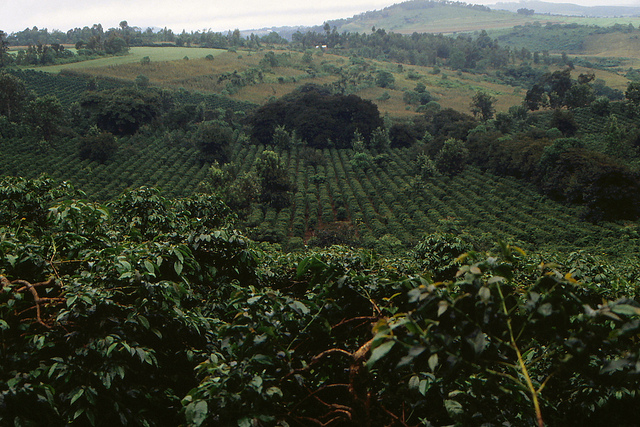Cornucopia’s Take: Coffee drinkers may reasonably expect production and market demand to shift as coffee country grows drier and warmer. Coffee farmers are losing crops, and sometimes trees, forcing them to consider new livelihoods.
On Slopes of Kilimanjaro, Shift In Climate Hits Coffee Harvest
Environment360
by Daniel Grossman
 |
Rising temperatures and changing precipitation are taking a toll on coffee farms worldwide, including the plantations around Mount Kilimanjaro. If the world hopes to sustain its two billion cup-a-day habit, scientists say, new climate-resilient species of coffee must be developed.
Melkseveck Mushi sat on the porch of his brick house on the flanks of Mount Kilimanjaro in Tanzania in October, talking about the prospects for his increasingly beleaguered coffee farm. Mushi owns 2,000 coffee trees, planted among bananas and beans on several acres of land that he inherited from his father. He’s also secretary of Okaseni, a cooperative of 80 small coffee farms around Kilimanjaro.
Alternating between English and Swahili, Mushi recalled that the region’s climate was once ideal for growing coffee, with stable temperatures hovering around 70 degrees F and dependable rainfall. But in recent decades, he said, the climate has become increasingly inhospitable. Temperatures are rising, and the rains often come too late to turn the delicate white flowers into cherries, the fruit of the coffee tree. Instead, these days the flowers often wilt, dooming that season’s crop.

